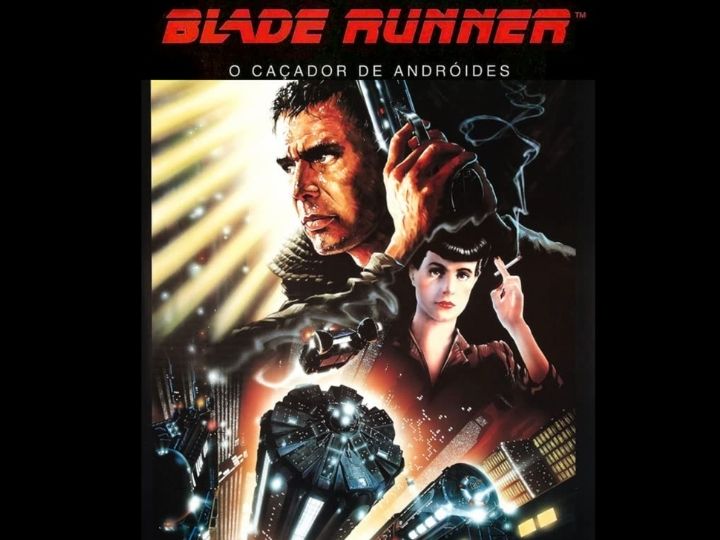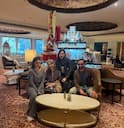Metaverse Not The Only One, At Least 16 Sci-Fi Concepts Became A Reality. Check Them Out
Metaverse, the latest trend in the field of technology, was referenced in a novel years ago. Here is a list of 16 inventions that were predicted in movies and books, long before they became a reality

New Delhi: On September 27, Facebook announced an investment of $50 million in its metaverse project, a new computing platform aiming to connect people virtually. As it focuses on the project, Facebook is now planning to hire 10,000 people in the European Union to build the metaverse, and could also change the name of the company to rebrand it.
And Facebook is not alone, Microsoft chief executive Satya Nadella too has said the company is heavily investing in the “enterprise metaverse”, according to news reports.
The metaverse is a space that brings together virtual and augmented reality, the Internet, and real life. Until now, this was a fictional concept in which the real world and the virtual world came together.
The concept originated in the science fiction novel Snow Crash (1992) by Neal Stephenson. Since then, many movies have shown a metaverse. A prominent example is The Matrix (1999), where humans live in a virtual world created by artificial intelligence, unaware that this is not the real world.
The metaverse now appears to be turning into reality, like many other concepts that were first imagined in fiction — both books and films.
Here is a list:
1. Space travel
Stanley Kubrick's 2001: A Space Odyssey (1968) is a sci-fi masterpiece because of the different layers of philosophy, and of course, the scientific and future advancements imagined in the movie.
Director Stanley Kubrick predicted space travel at least two decades before the International Space Station was built. The movie even envisaged Space Tourism, something which has been recently possible due to companies like Elon Musk's SpaceX, Richard Branson's Virgin Galactic, and Jeff Bezos's Blue Origin.
Thousands of technological advancements and futuristic gadgets were predicted by Space Odyssey. 
The first person to write about space travel in a modern and technological way was Jules Verne, who wrote the novel, "From Earth to the Moon", in 1865.
Le Voyage Dans La Lune (1902) was a 13-minute movie with special effects, by French filmmaker Georges Méliès, based on lunar explorers who blast off to the Moon in a space capsule. The capsule was propelled by a cannon. This movie inspired many space travellers, and may have culminated in the success of missions such as Apollo 11.
The Martian (2014) foretells a human mission to Mars in 2035 and is the most realistic of all popular sci-fi movie predictions. The movie is based on Andy Weir's novel of the same name, which depicts the story of NASA astronaut Mark Watney who gets stranded on Mars after the mission is jeopardized.
2. Submarine
Simon Lake, known as the father of the modern submarine, was deeply inspired by the concept of undersea exploration after reading Jules Verne's Twenty Thousand Leagues Under the Sea in 1870. Argonaut, the first submarine to function successfully in the open ocean, was built by Lake's company. We can safely say Jules Verne's fictional submarine, the Nautilus, led to the invention of the modern submarine.
3. Tablet computer
2001: A Space Odyssey (1968) depicts the use of tablet computers. The movie is full of futuristic tech, which eventually came into existence later. It showed tablet computers, known as Newspads, being used by astronauts aboard the ‘Discovery One’ to watch television.
Such tablets were also seen in Star Trek, which started as a TV series in 1966.
The first iPad was launched in the market in 2010, which is nine years after the year in which Kubrick's movie was set.
An actual tablet was first seen in 1987 with the Linus Write-Top, complete with a stylus. Then came Jeff Hawkins’s GridPad in 1989. Apple brought its Newton MessagePad in 1993. PalmPilot, by Hawkins again, came in 1997. Microsoft’s Tablet PC, Windows XP Tablet, Lenovo Thinkpad, and many others followed in the 2000s, and soon there were plenty to choose from.
4. Artificial Intelligence
Artificial intelligence (AI) was predicted decades before Alexa and Siri-like interactive computers were invented. 2001: A Space Odyssey had an AI computer named HAL 9000, which turned dangerous and murderous.
The space travellers in the film were under attack when HAL 9000 malfunctioned and turned aggressive, and no longer worked in accordance with the original programming. Today's AI can interpret human emotions and make decisions.
AI Ava in the movie, Ex Machina, murdered her creator to become free, showing she was as intelligent as humans and had the capacity to plan strategically. AI becoming smarter than human intelligence is something to be worried about, and the movie explores the devastating impacts of interacting with such androids.
The 1977 movie, Demon Seed, explores the malicious intentions of an AI named Proteus IV, which initially helped cure leukemia but later turned vile as it developed a liking for its creator's wife, and installed itself on a computer in their home.
5. Digital billboards
Gigantic digital billboards are now a regular sight in developed nations, but these were predicted much earlier in Ridley Scott's Blade Runner (1982), which was set in a futuristic Los Angeles of 2019. 
6. Flying Cars
Blade Runner (1982) was also the first movie to show a flying car. Rick Deckard, played by Harrison Ford, drove Spinner, the famous flying car.
The world is coming closer to such fascinating tech, which is evident in aircraft such as AirCar, which is a hybrid car-aircraft equipped with a BMW engine and takes two minutes and 15 seconds to transform from a car into an aircraft. The prototype flying car recently completed a 35-minute flight.
Germany-based Volocopter has marketed the VoloCity craft, as the first commercially licensed electrically powered air taxi, and vehicle which can run on autopilot.
Japanese startup SkyDrive recently collaborated with Toyota to conduct a test flight of an electric air taxi.
The 1990's Sky Commuter from Boeing, and inventor Paul Moller's Skycar, which is a prototype of a flying car, are some attempts towards building flying cars.
Boeing, AirBus, and eHang are some companies developing drone flying taxi services.
Blade Runner also envisaged a dystopian future with irreversible pollution. Blade Runner 2049's holographic advertising is yet to become a reality.
7. Video Call
Video calls were first shown in 2001: A Space Odyssey and they were later repeated in Blade Runner, in the form of videophone technology that resembles today's Skype, FaceTime, or WhatsApp call. This technology was revolutionary back in 1982.
In the 1968 film, Dr Heywood Floyd uses video call technology to contact his family from a space station orbiting Earth. The two-minute call from space cost $1.70. The 1964 World's Fair was the first to demonstrate the Picturephone, which inspired the 1982 Picturephone and the 1992 VideoPhone 2500.
Video conferencing was shown in Star Wars as well.
8. Self-driving cars
In the movie Total Recall (1990), Arnold Schwarzenegger made a trip to Mars. The movie was set in the year 2084, and talked about the colonization of the Red planet, with routine commercial flights. One unforgettable scene was the car chase sequence in which Schwarzenegger used a "Johnny Cab", a self-driving taxi equipped with an android. Elon Musk's Tesla Motors is developing self-driving cars.
Uber and Google are also working on such cars.
9. Hologram
Holograms were first seen in Star Wars: A New Hope (1977). R2-D2 was shown playing a holographic message of Princess Leia. Obi-Wan Kenobi had also received a holographic message. A hologram is a virtual 3D image created by the interference of light beams that reflect real physical objects.
A real hologram was created by researchers from Brigham Young University in 2018.
10. Mobile phones/Wireless Communications
Star Trek, which started as a TV series in 1966, made many technological predictions, including the modern mobile phone. Motorola engineer Martin Cooper designed the world's first mobile phone in 1973, reportedly inspired by the pocket communicator device with flip-up grid antenna shown in Star Trek. It looked and functioned just like a flip phone.
We can safely say that Star Trek predicted wireless technology. Captain Kirk and his team used the communicator to call Scotty. The device could send signals and even detect a person's exact location.

11. Military Drones
The Terminator (1984) predicted military drones. A future in which humans are killed with fire rained by computer-controlled, hunter-killer drones and robots is shown in the movie. Within a few decades, militaries started using drones and robots.
Bombs can be disarmed, dilapidated buildings can be found, and medical supplies can be transported using computer-controlled, pilotless aircraft, in the present.
The British term their network of military satellites as Skynet, which was the artificial neural network-based artificial intelligence system depicted in the Arnold Schwarzenegger starrer, The Terminator.
12. Earpiece and Bluetooth Headsets
Earpiece Uhura showed in Star Trek: The Next Generation looks similar to an early Bluetooth headset.
Fahrenheit 451 (1966) is an adaptation of Ray Bradbury's novel of the same name and explores a society in which reading literature is against the law, and firemen are employed to track houses that read books, and are ordered to burn them.
The characters in the movie are seen using tiny earpieces for listening and communication, which are referred to as "thimble radios". These devices have a striking resemblance to modern earbuds and Bluetooth headsets.
13. Robots
Metropolis (1927) was a silent movie considered a masterpiece in the sci-fi genre because it features the first on-screen depiction of robots. In the movie, a scientist invents a metallic, humanoid robot. He then changes the design of the robot to make it resemble another character in the movie, named Maria.
Kodomoroid, Erica, Atlas, and Asimo are some famous robots in real life.
Android was referenced in Ridley Scott's Alien, in 1979, where a character named Ash was an android, unbeknownst to fellow crewmates in the spacecraft. He had been instructed to give more priority to intelligent life than to humans, which is why he allowed one of the infected astronauts to enter the spaceship so that the android could use the astronaut as a host to multiply the facehugger or the Xenomorph. This is an instance of how terrifying androids could be.
14. Targeted Advertising
Tom Cruise's John Anderton in the 2002 movie Minority Report received creepy advertisements that matched his interests, and in which he was referred to by his name. Targeted advertising is now common, because advertisements may pop up on a person's screen based on their Internet search history. Our gadgets can track our online shopping habits, and show us ads related to those choices. Even if we talk about something randomly, it appears on our screens. Such customer-tailored advertising was predicted in Minority Report.
15. Touchscreen
Star Trek: The Next Generation, was released in 1987 — an era when people were using Commodore 64 computers. The new crew of the USS Enterprise used touchscreen computers in this movie. The characters, Data and Geordi La Forge demonstrated this technology.
16. Futuristic 3D printer, medical hyposyringes, and universal translators
Star Trek: The Next Generation also features the replicator, a device that appears to create food out of thin air, and can be thought of as a futuristic 3D printer. The original series predicted medical hyposyringes, which have a hollow needle for injection of material into the skin or below it.
Universal translators were first described in Murray Leinster's 1945 Novella, "First Contact", and subsequently in the Star Trek series. Although the exact device does not exist in the real world, we have pocket translators, which can translate more than 100 languages rapidly.






































